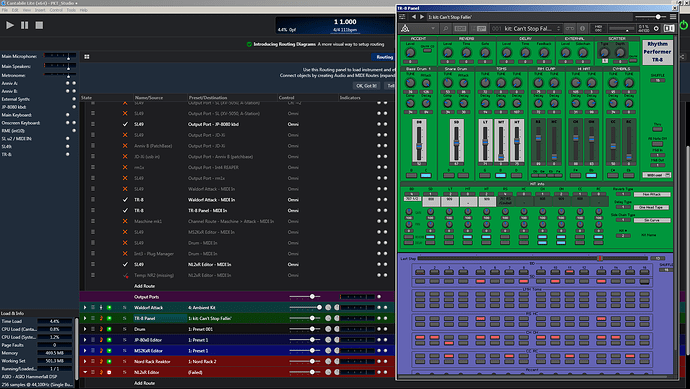Hi Brad,
The Polyphonic Aftertouch here is used exactly like how you would use CC. You can consider this as an extra set of Control Change messages available in the MIDI spec.
Type : Control Change Message
Channel : Ch 1 -16
Parameters : CC 0 - 127
Values : variable 0-127
Type : Polyphonic Aftertouch Message
Channel : Ch 1 -16
Parameters : note# 0 - 127
Values : variable 0-127
As detailed above, both Access Virus and Native Instruments have elected to use Poly Aftertouch in addition to CC as a means of communication between devices.
Let’s say I use a Native Instruments MIDI controller to control a MIDI instrument as well as Cantabile’s transport functions. I can use PolyAT exclusively for any binding in the group “Cantabile” (only PolyAT, absolutely no CC assignments here), which leaves me with all sixteen channels of CC intact and available to use for outboard MIDI devices.
In this scenario, when I see on my MIDI controller or in the binding list under “Event” that I am triggering PolyAT messages versus CC, I’ll be instantly clear whether I am manipulating Cantabile or my sound modules.
A clear advantage is that Cantabile will never respond to unwanted CC messages coming from any MIDI devices.
For example, I may suddenly score a friend’s new synthesizer and put it in my Cantabile rig. But when I turn some knobs, it may be sending CC22 which, unbeknownst to me, also gets its way to the Cantabile binding via some internal software routing, this could change my Cantabile settings by accident.
But if Cantabile does not respond to CC at all, then I will be very sure about not having any such risk!
On the flip side, when I send control message from my MIDI controller, it could be routed to many MIDI instruments at once. If I use PolyAT instead of CC to operate Cantabile, even if such message gets simultaneously sent to all my MIDI gears, most likely nothing bad will happen!
PolyAT will make control assignments much easier to organise, because now we have two types of messages with 16 channels each (total of 32 x 128 controllers). In the aforementioned case, I can focus my attention on setting the right CCs between MIDI gears with a peace of mind that they will never interfere with my computer side of MIDI assignments. I also can have more flexibility in using a particular controller number across more channels without having to crunch some numbers into the same channel. (for example, if I need to control 32 volumes, I can assign cc7 16 times, and note7 another 16 times, without having to use another controller number.)
If PolyAT is easy to implement, I just think the reward ratio is high!
If you’re curious to test what I mean, you can download Native Instruments’ “Controller Editor” and see how Poly Pressure Message can be assigned to knobs and buttons of the long list of MIDI controllers they make. Among them, a used Maschine mk1 now can be had for very cheap !
Thanks!
Pat



